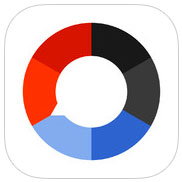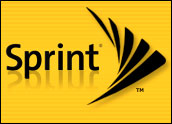
Mango, the largest update yet to Microsoft’s still-young Windows Phone 7 mobile OS, was released to manufacturers Tuesday in what the software company called an “important milestone” in its fight to gain some ground in the competitive smartphone marketplace.
The update was first shown off in May and is being viewed as a dramatic upgrade from the basic Windows Phone 7 platform, released in 2010. Mango sports over 500 new features and has a much greater focus on apps and communication tasks now regularly performed on smartphones.
The first phone to roll out with the update is the ISI12T, manufactured by Fujitsu Toshiba Mobile Communications.
The update should be available to handsets beginning this fall, but no specific release date was given. The as-yet-unreleased iPhone 5, expected to be a chief smartphone competitor, is the subject of rumors of a September release as well.
New Features
Since the platform was previewed in May, researchers and developers have had time to look over some of the new features the company is touting for Mango’s release. Giving attention to data that shows smartphones are becoming mainstream methods of communication, the company has attempted to integrate social networks, business tasks and personal data needs into one platform.
Developers didn’t want to tangle the different functions, however, so one of the key updates on Mango is its emphasis on multitasking. Known as “App Multitasking,” the feature lets users pop in and out of different apps efficiently.
“The multitasking — switching between apps — UI looks to be intuitive and useful,” Daniel Ashdown, research analyst at Juniper Research, told TechNewsWorld.
Another attempt at efficiency is the threading feature. Using threading, a user can put all different types of messaging into one — combining a text, e-mail and instant message, for instance, into one, easy-to-see conversation. The option also exists to combine personal e-mail accounts into one app to cut down on going back and forth between the two.
Another feature, Groups and Messaging, is probably the most talked-about service. It allows the user to put filters on social networks such as Facebook, so if there are only a handful of News Feed updates someone cares about, those are they only ones they have to see.
Groups can also come into play with the threading feature. A user could start a conversation — say a Facebook chat with one of the select people in their Facebook group — then continue in e-mail without a complicated switch. The history of that conversation will then be in a profile stored in the phone.
Microsoft is also excited that the platform will debut the mobile edition of Internet Explorer 9.
“The addition of IE9 is important, as Microsoft claims it can render webpages faster than browsers running on competitors devices,” said Ashdown.
Also to be added are enhanced search features with Bing. Instead of just typing in something to the engine, a user can use a feature called “Local Scout” to find information on things like restaurants and shopping near his or her exact location.
Mango comes with a visual search, wherein a user can scan an item such as a DVD and then get directed toward a list of prices or reviews for the product. With a book, the user could be directed toward the Amazon Kindle app and have it downloaded almost instantly. The visual search scan can also translate text into different languages.
Even with enhanced Internet access and capabilities and the compelling search features, the focus with Mango is on integration across social networks, e-mail and apps.
“The biggest thing with Mango is multi-tasking, but it is really feature-packed and represents what an annual release might look like for this platform,” Al Hilwa, program director of application development software at IDC told TechNewsWorld.
Is It Enough?
Even with the draws from multitasking and compelling search and Internet features, it’s unclear whether Mango has what it takes to make Windows Phone 7 a leader in the smartphone race for domination.
“It’s definitely something that will bring Microsoft back into the game, but as far as the smartphone race, there’s still a lot of challenges, obviously. Android and iPhone have made it a two-man race at this point,” Brent Iadarola, research director for mobile and wireless devices at Frost & Sullivan, told TechNewsWorld.
One key will be to make sure a variety of prices and models of mobile devices can support WinPho7.
“I think it will take them some time to build up the level of sales. The most crucial aspect is having a variety of devices across prices and capabilities,” said Hilwa.
Drawing innovative developers to Microsoft’s platform, rather than Apple’s iOS or Android, is also key. Microsoft’s relationship with Nokia could be a great draw for developers.
“The largest attraction is the Microsoft-Nokia relationship. There’s just such a large existing base of users globally of Nokia, that there’s an instant attraction in that area. That can provide a very large addressable market without having to build it organically,” said Iadarola.
The bottom line appears to be that while the updated platform features many draws, it alone may not be enough to attract a flock of customers.
“Some of the key elements of the update they talked about were threads and social network integration. Those are all definitely attractive to the platform and a great thing to highlight, and those will provide a unique differentiator, but I’m not sure it’s enough to be a huge draw,” said Iadarola.






















































I wonder if this update will be available for existing WP7 phones as well?